Several years ago, I visited Bear Lake in Rocky Mountain National Park, CO. I was chomping at the bit to experience some mountain snowshoeing for the first time, considering I’ve only snowshoed in the Midwest.
I meandered off the trail for a while to take in the excitement of snowshoeing on deep powder. Reaching a pristine location high above the lake, I measured the depth of snow by pushing my hiking staff down until it hit a rock. I was in chest-deep snow. Being a Midwesterner, I really didn’t understand that kind of depth.
I then glanced back at the fairly steep incline of snow behind me and suddenly realized I should not be taking risks in unfamiliar areas. Although I read about deep high-altitude snow and avalanches, I have no experience in it. So I gracefully bowed to the mountain and got back on the firmly established trail to enjoy the remainder of my hike.
Safety is always at the forefront of any adventure I take, including something as seemingly low-risk as snowshoeing. For years I taught an adventure class and always led a unit on safety. I showed students how to do a risk assessment by evaluating potential dangers that could be encountered on trail and in the backcountry.
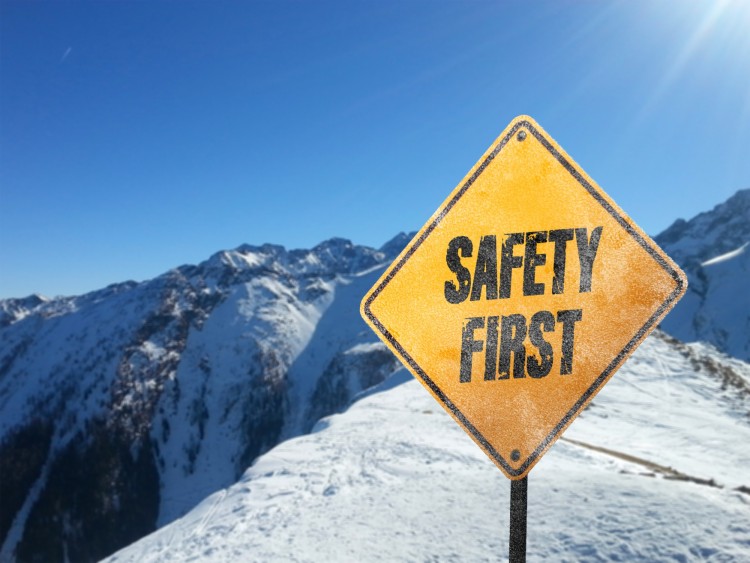
Safety should be at the forefront of every adventure, whether just starting out or as a more advanced snowshoer. Photo: Michael_Saint via Shutterstock
Some of the links in this article may contain affiliate links. When you make a purchase using these links, part of the proceeds go to Snowshoe Mag. Additionally, as an Amazon Associate, we earn from qualifying purchases. Please see our disclosure for more details.
Potential Hazards and Dangers
In snowshoeing, some of the potential safety issues to consider include injury from a fall, falling through frozen water, getting lost, hypothermia, and frostbite. You can also add in the dangers of changing weather, avalanches, altitude sickness, and tree wells if in the mountains.
To be fully prepared for potential hazards, it’s helpful to list the risks and then identify measures you can take to prevent potential danger or prepare for managing emergencies. A helpful guide is NOLS Winter Camping by Buck Tilton and John Gook. They devote an entire chapter to winter hazards, focusing on avalanche safety.
Falling on Snowshoes
The most common snowshoeing injuries tend to be strains, sprains and breaks to the lower extremities from snags, twists, and falls. Falls are especially common when first getting accustomed to snowshoes and on steep slopes.
If you do fall, a simple approach is to roll over onto your front, put one knee up and push yourself up to a half-kneeling position. Then, raise yourself back to a standing position by using your knees to brace your hands/arms. Or, if you have a hiking staff, use the staff to support yourself as you stand.
To prevent injuries and maintain safety while snowshoeing, watching your step and being cautious is a good starting point. Also, you’ll want to make sure to bring a first aid kit with you on the trail.
If you need to traverse up a steep slope, make sure you have snowshoes that excel in mountainous terrain. You can also take a wilderness first aid course, so you know how to recognize and treat injuries.
Read More: Snowshoeing Techniques for the Beginner

These individuals seem to be having fun, but they could fall and injure themselves if not careful. Photo: Jim Joque
Frozen Water
Frozen water, no matter the body of water is a safety issue in any winter sport, including snowshoeing. If you cross frozen water, you can use caution by traveling slowly and taking light steps. I have only gone through the ice once in a knee-deep creek. That was frightening enough.
Pack a rope and a set of ice grips or an ice ax in case of an emergency. Ice grips are a pair of handles with a retractable plastic casing that, when slammed into ice, will expose a long sharp nail to aid in pulling yourself from the water. Also, loosen your snowshoe bindings for easy exit in case you go through.
But the best recommendation is to avoid traveling on ice altogether, especially on rivers and streams where there may be moving water hidden under snow cover. To ensure you’re avoiding the ice, know your surroundings by using a map or compass to determine your location. If you need to cross the ice, it should be at least 4 in (10 cm) thick for a safe crossing.
If you fall through the ice, try to remain calm and exit the water from the point you fell into the water. Use your hands or an ice ax to grip the ice and pull up your body. Then, roll away towards the shore, so you don’t accidentally fall through again. Once out, try to change out of your clothes and find a warm area as soon as possible.
Becoming Lost
Snow can easily hide the trail or other landmarks, causing any snowshoer to become disoriented quickly. This situation is a common safety hazard to consider on any snowshoeing adventure.
To keep from getting lost, the trick is to know where you are and where you are going. In addition, you’ll want to competently know how to use a map and compass or global positioning system (GPS). Those skills can save your life.
If you find yourself lost, stop and think. Then, try to follow your snowshoe tracks back if you can or look for landmarks to help you navigate. But, if that’s not possible and you don’t know from which direction you came, experts recommend the following precautions:
- Stay where you are located. If you need to move, remain close to your original location and take your gear with you when you move.
- Signal early and often, such as by blowing three times on a whistle continuously. Three is a universal signal for being in distress.
- Find or build a shelter. If these options aren’t available, make sure to have an emergency blanket with you.
- Remain calm.
In June Fleming’s book, Staying Found, she provides a further detailed plan for what to do if you get lost.
Read More: Preparing for the Worst (Just in Case): A Story of Survival
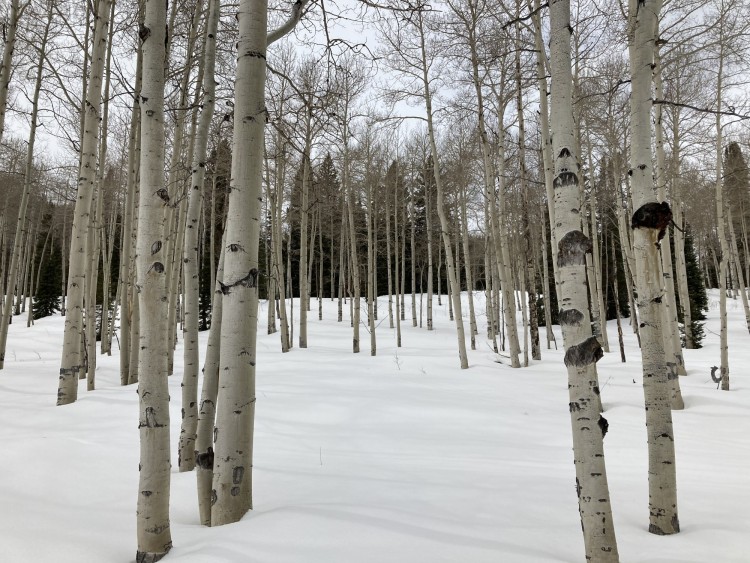
Snow can easily hide the trail or other landmarks, causing you to become disoriented quickly. Thus, a map and compass are vital to avoid getting lost while snowshoeing. Photo: Susan Wowk
Hypothermia
At the top of my list is hypothermia, when your core body temperature falls below 95 degrees F / 35 C. This situation can be dangerous in any winter activity. Signs of hypothermia include shivering, cold extremities, and eventual apathy, awkwardness, and irritability.
Take action early on by giving warmth, food, and warm liquids. Prevention comes in the form of dressing well for cold weather, keeping hydrated and well-fed. You need water in winter just as much as in summer. So drink plenty of water, and don’t wait until you are thirsty to drink. You burn a lot of calories snowshoeing. So eat well and don’t underestimate your food needs.
Read More: Book Review: Hypothermia, Frostbite, and Other Cold Injuries
Frostbite
In extremely cold temperatures and especially when outdoors for long periods of time, frostbite can be a safety concern for snowshoers. Frostbite is the freezing of human tissue from exposure to the cold. The first signs of frostbite include pale color skin and numbness of extremities.
You can prevent frostbite by keeping exposed skin covered. And you can treat onset frostbite by placing the affected extremity in a warm place, such as putting your fingers under your armpits.
Read More: 6 Ways to Refresh Your Safety for Winter Hiking and Snowshoeing
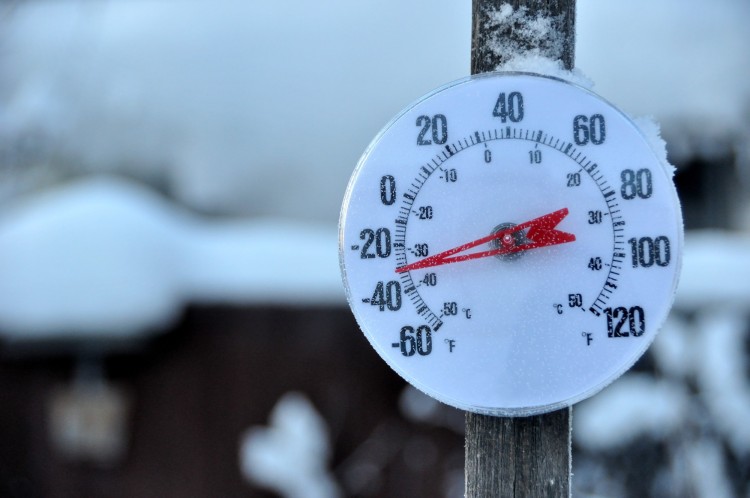
Hypothermia and frostbite are more common in freezing temperatures. Photo: Gary Whitton via Shutterstock
Changing Weather
Sometimes you may start your snowshoeing adventure on a clear day, only to end it with snowfall. Conditions change quickly in the mountains, so it’s best to be prepared.
Always check the forecast for the day before heading out on a day trip and pack layers when snowshoeing to adjust to changing temperatures. If you notice the weather shifting while out, head back to avoid being caught in a storm. Continuing to snowshoe when conditions worsen can quickly cause even the most experienced snowshoers to become lost.
Avalanches
Another safety concern to be aware of when mountain snowshoeing are avalanches. Avalanches are a danger to all winter sports enthusiasts, not just skiers and snowboarders. Of 274 avalanche fatalities across the US over the last ten years, 48 were snowshoers and hikers, about 17.5% of all victims.
Since people trigger most avalanches, it’s critical to know what avalanche terrain looks like and how avalanches start to avoid them. All snowshoers, even those who don’t regularly travel to the mountains, need to be avalanche aware and take a course to become familiar with the warning signs and danger zones.
Always check the avalanche forecast in your area. If you plan to travel near avalanche terrain, ensure that you and the others in your group come prepared with the training and a transceiver/beacon, probe, and a shovel.
If you get caught in an avalanche, try to grab onto something. Or, if you are swept with the avalanche, swim on the surface of the snow to avoid being buried. Also, create an air pocket for breathing, and try to stay as calm as you can while rescuers are on their way.
To be sure I have a safe adventure, I will definitely be better prepared the next time I take a trip to the mountains to snowshoe. I will first attend an avalanche education program and then take my first few hikes with a skilled guide. I, too, am always learning.
Read More: Avalanche Avoidance Tips and FAQ
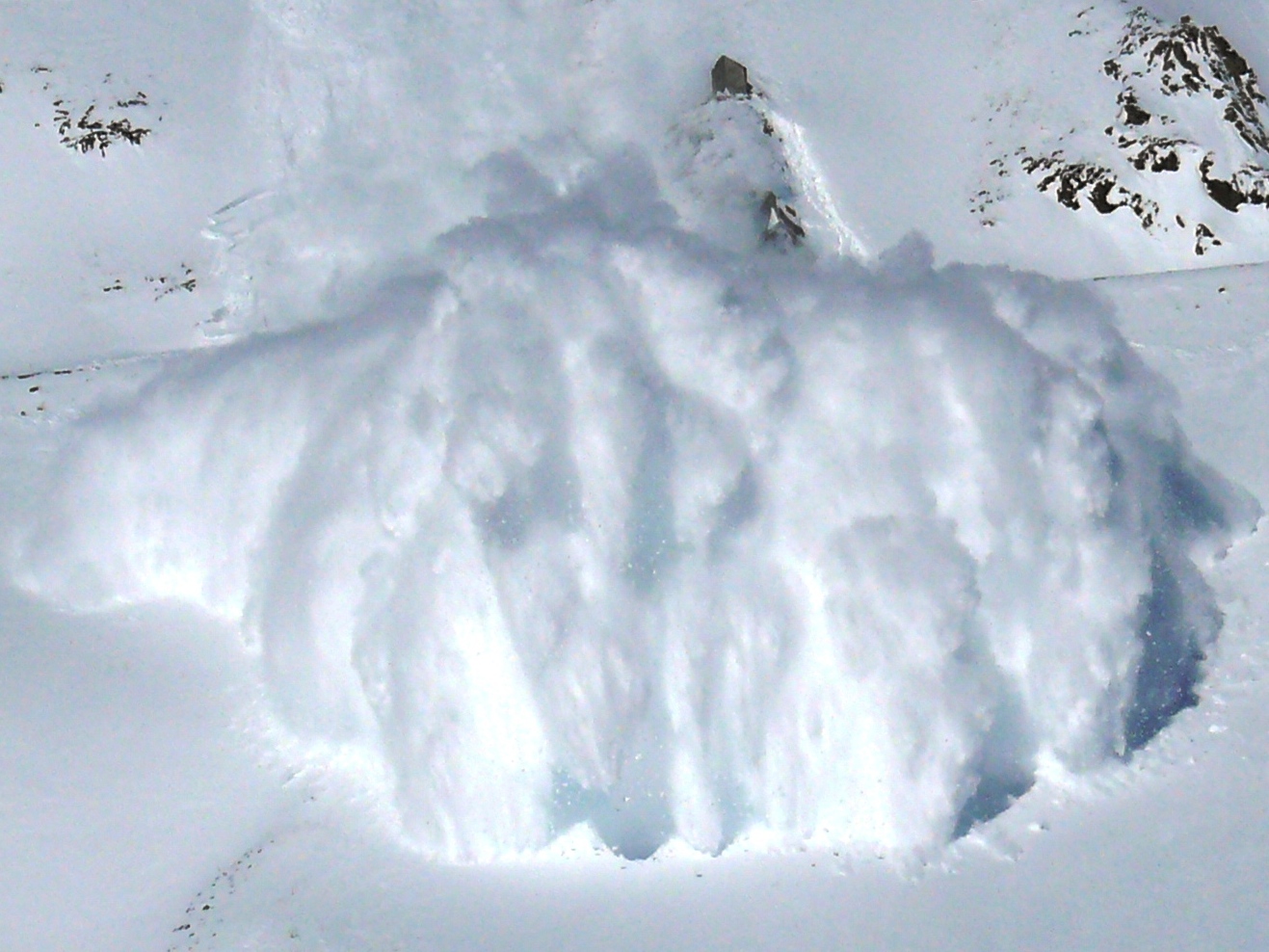
Avalanches can be deadly and an incredibly terrifying experience. All snowshoers need to have avalanche education. Photo: Scientif38 via Wikimedia Commons
Altitude Sickness
When you travel to a high altitude too quickly, you may encounter altitude sickness without letting your body adjust.
Up to half of the population may experience altitude sickness at 8,000 feet (2438 m) or higher. Symptoms can be as mild as dizziness, headache, and fatigue or as severe as difficulty with coordination, confusion, or shortness of breath. However, each body acclimates to elevation differently depending on the elevation your body is used to daily.
To avoid altitude sickness, make sure to ascend at a slow pace to help your body adjust. Hydration is also key to preventing altitude sickness. Your body tends to use more fluid at higher elevations, so you may need to drink more water than usual to stay hydrated on your trek.
If you start to feel symptoms of altitude sickness, make sure to descend and go to a lower elevation as soon as possible.
Read More: Up Your Elevation Awareness: The Importance of Acclimation, with Tips and Tools
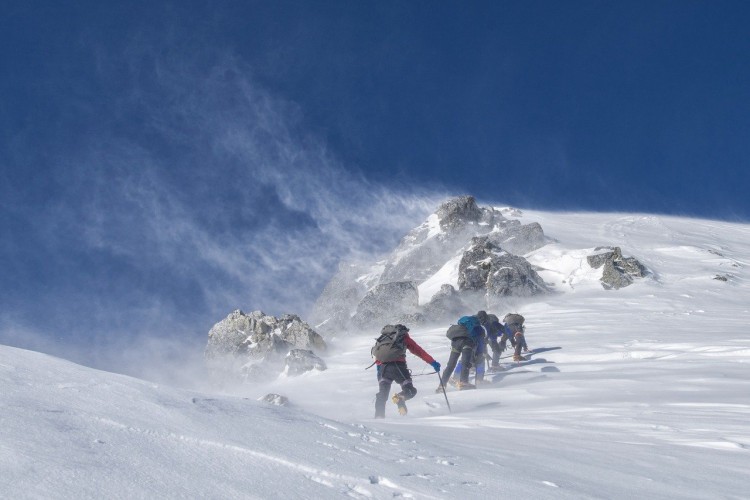
Altitude sickness can happen at any elevation above 8000 feet. If you experience the symptoms of altitude sickness, descend immediately. Photo: Kanenori via Pixabay
Tree Wells
A tree well is space at the bottom of a tree underneath branches and a key safety concern while snowshoeing. This area does not have the same amount of snow as the area around it and can be very dangerous, especially in deep snow. In addition, since the tree well is usually challenging to see, individuals can fall headfirst into the well and then become buried by the snow from the branches above.
Tree well incidents most often occur during or after large snowstorms, when there is a large amount of fresh snow. So to avoid them, be cautious when snowshoeing near trees when there is a large amount of snowfall.
If you find yourself caught in a tree well, try not to panic and use a whistle to call for help. If snowshoeing alone, you can grab the tree to avoid becoming buried or falling in further.
Overall
It’s essential to be aware of the risks above while snowshoeing. Also, always pack the essentials you need for the level of activity you are undertaking. For example, if you are going out on a daylong hike, take a daypack with safety necessities. The late snowshoeing author Gene Prater identifies a list of these essentials in the fifth edition Snowshoeing: from Novice to Master as edited by Dave Felkley.
What other safety measures do you take while snowshoeing? Please share your thoughts with us in the comments below.
This article was originally published on January 24, 2006. Susan Wowk most recently updated it with additional safety hazards and photos on November 11, 2021.
Read Next: What to Bring When Snowshoeing: Top Accessories for the Day Hiker

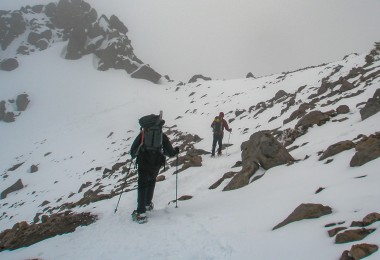
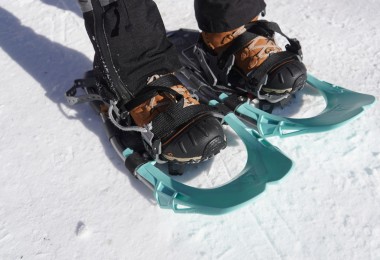
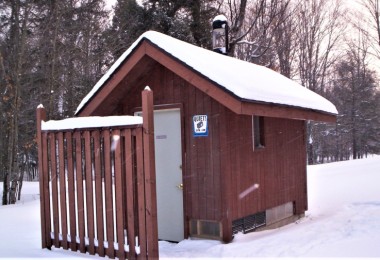
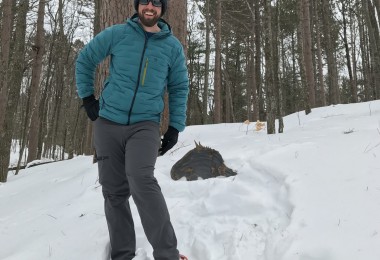

Great advice thank you !!